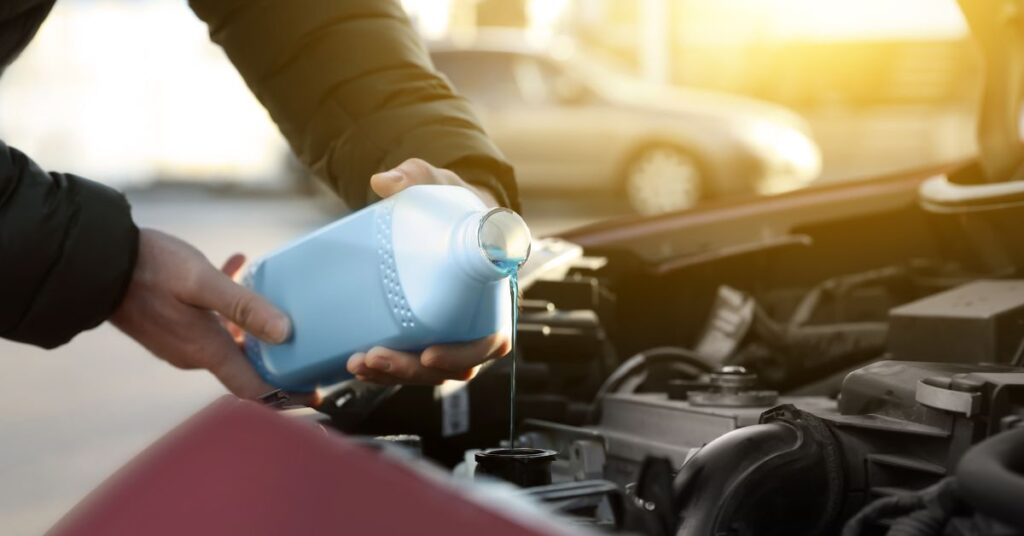
Table of Contents
While many have heard of a radiator, everyone may not know exactly what it does. In the simplest terms, the radiator is the central component of a vehicle’s cooling system, which regulates the engine’s temperature to prevent it from getting too hot. This article discusses what a radiator does, where it is located, what components make up a radiator, how often it should be serviced, and signs of a failing radiator.
What Is The Function of a Car Radiator?
The radiator is crucial to maintaining your engine temperature. Performance can suffer when the engine gets too hot. Here is a deeper look at the primary functions of a car radiator.
Heat Dissipation: At the heart of the radiator’s function is its ability to expel unwanted heat from the engine. As the engine operates, it generates significant heat, which, if not controlled, can damage engine components. The radiator uses coolant fluid to absorb this heat, then dissipates it through its fins as air flows over them. This significantly reduces the coolant temperature before it is recycled into the engine. Think of the radiator as a cooling checkpoint for the coolant that keeps an engine cool.
Coolant Circulation: Central to its operation, the radiator circulates coolant throughout the engine. This fluid journeys through the engine block, absorbing heat and transporting it back to the radiator, which is cooled by the passing air—helped by the car’s movement or the radiator fan. This cycle is critical for the engine to operate efficiently without overheating.
Thermal Regulation: Maintaining an optimal temperature is vital for engine efficiency, fuel economy, and longevity. The radiator ensures the engine heats quickly and stays at an appropriate temperature. Proper thermal regulation also helps minimize emissions and improve the car’s overall health.
Where is the radiator located in a car?
Typically positioned at the front of the car behind the grille, the radiator is strategically placed to maximize exposure to airflow during driving. This aids in the cooling process. You can easily locate the radiator by opening the car’s hood and looking toward the front, where you’ll find a large, flat component with metal fins.
What Components Make Up a Car Radiator?
A car radiator comprises several integral components, each serving a specific function:
- Core: The core is the central part of the radiator and crucial for its operation. It consists of a series of parallel tubes and extended surface fins that increase surface area for heat exchange. As coolant flows through these tubes, the heat from the coolant is transferred to the fins, where it is dissipated into the air flow across the radiator.
- Fins: : The fins are thin, metallic blades attached to the radiator’s core that facilitate heat dissipation. As air passes over these fins, the heat absorbed by the coolant is released into the atmosphere, significantly reducing the coolant’s temperature before it recycles back into the engine.
- Pressure Cap: The pressure cap plays a critical role in the radiator’s functionality by maintaining a specific pressure within the radiator system. This cap uses a spring-loaded valve to seal the system, which increases the coolant’s boiling point and helps prevent evaporation and boiling over.
- Inlet and Outlet Tanks: These tanks are located on either side of the radiator core and serve as reservoirs for the coolant. The inlet tank receives hot coolant from the engine, and after the coolant is cooled, passing through the radiator core, it moves to the outlet tank, where it is recirculated back into the engine.
How Often Should A Car Radiator Be Serviced?
To prevent cooling system failures that could lead to engine damage, it’s advisable to service your car’s radiator as part of routine maintenance every 30,000 to 60,000 miles. McCullough NAPA Auto Care provides comprehensive maintenance plans, including 30k/60k/90k schedules, to ensure your radiator and cooling system are in optimal condition.
Signs of a Failing Radiator
Recognizing the early signs of radiator trouble can help you address issues before they lead to more significant damage:
Persistent Overheating: If your car frequently overheats, it may be a sign that the radiator is not effectively dissipating heat. This could be due to a blockage within the radiator or insufficient coolant flow, requiring immediate attention.
Coolant Leaks: Finding puddles of coolant under your car is a clear indicator of a leak in the radiator system. These leaks can come from small cracks or holes in the radiator or its connecting hoses, which can worsen over time if not repaired.
Discolored Coolant: Coolant that appears rusty or oily is a sign of contamination within the radiator. This discoloration can result from internal corrosion or a failing head gasket, introducing oil into the cooling system.
Low Coolant Levels: Consistently low coolant levels often suggest persistent leaks or excessive consumption within the engine. Investigating and repairing the cause of coolant depletion is crucial to prevent your engine from overheating.
Visible Rust and Corrosion: Rust on the radiator itself or its components indicates a degradation that can lead to leaks and cooling inefficiency. Regular inspections can help catch this deterioration early before it leads to more severe cooling system failures.
Fluctuating Temperature Gauge: An erratic temperature gauge often points to problems with the radiator’s ability to regulate engine temperature. This can be caused by a clogged radiator, a failing thermostat, or issues with the radiator cap, which may not maintain proper pressure in the cooling system.
By watching for these signs and addressing any issues promptly, you can ensure that your radiator continues functioning effectively, protecting your engine and maintaining optimal performance.
Radiator Repair and Service in Atlanta, GA
Maintaining your radiator is essential for the health of your car’s engine. If you notice any signs of radiator distress or it’s time for routine service, contact McCullough NAPA Auto Care in Atlanta, GA. Our expert team offers detailed maintenance plans to ensure your radiator functions perfectly, safeguarding your engine and enhancing your vehicle’s longevity.

